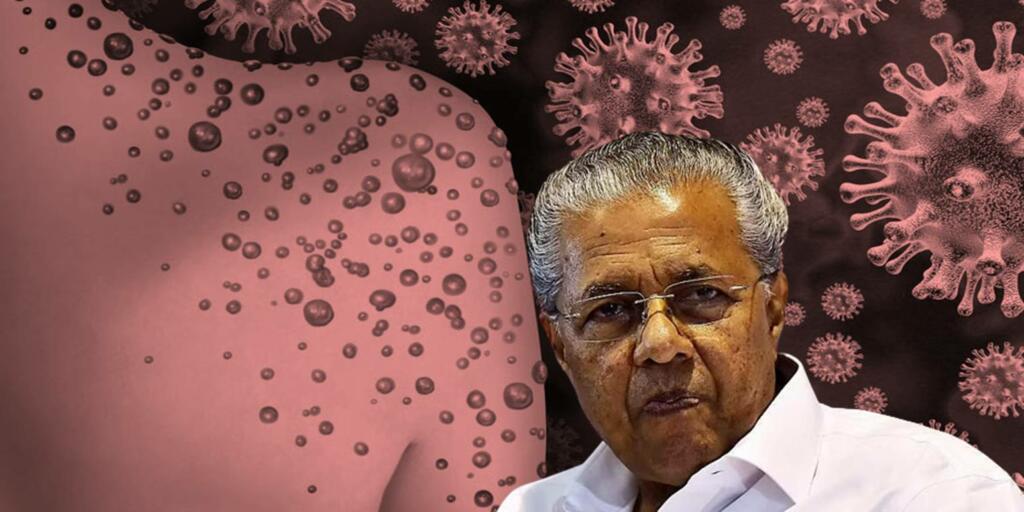Welcome to Kerala. The state which is a hotbed of zoonotic diseases. The state from where the Nipah virus began spreading. The state where the first case of COVID-19 infection was recorded. The state where the first Zika virus disease case ever was reported. Kerala is unstoppable. What made me say this, you might think. To your surprise but not actually surprise, the southern state Kerala has now reported India’s first case of monkeypox on Thursday.
Monkeypox cases reported in Kerala
There have been reported multiple cases of monkeypox identified in over 50 countries since January this year have been. However, India was not on the list of these countries. But, on Thursday, the first confirmed case of monkeypox in the country was reported in Kollam district of Kerala.
Kerala Health Minister Veena George informed that the infection was diagnosed in a 35-year-old man who had returned from the UAE last week only. George stated, “The infected person is believed to have come in contact with another confirmed case in the emirates.”
Soon after the central government was informed about the case, the Centre had rushed a team of experts from the National Centre for Disease Control (NCDC) to help the state.
Meanwhile, a few days after the first case was reported, another case was detected in India, that too, in Kerala. On Monday, a 31-year-old man from Kerala tested positive for monkeypox. The man hails from the Kannur district in the state.
WHO has taken the conscience of the matter and said that it would reconvene its expert monkeypox committee on July 21 and will decide if the outbreak needs to be declared a global health emergency.
Most monkeypox infections so far have been observed in men who have sex with men, of young age and chiefly in urban areas, according to the WHO.
According to available statistics, almost all patients affected thus far are male, with a median age of 37, with three-fifths identifying as men who have intercourse with men, the WHO said.
From Nipah to Covid; virus outbreaks in Kerala
While you may think that it is the first time that the first case of any disease has been reporte din Kerala only, I would like to burst your bubble and introduce you to real Kerala which has always been the hotbed of various viruses.
In what came as a real shock for the people, Kerala is the state where the first case of COVID-19 infection was also recorded. On 27 January 2020, a 20-year-old female was detected with Covid. Moreover, while the country was seeing a dip in the third wave of coronavirus cases, caused by the more transmissible omicron variant, the leftist bastion of Kerala was repeating its dubious feat of the previous two waves. Kerala, for those unversed, is one of the top five affected states from covid.
Not only Covid, but the state has also seen epidemics of dengue, chikungunya, Kyasanur forest disease, West Nile Fever, H1N1, Nipah, and anthrax, leaving us surprised to ask why is it only Kerala to witness every virus outbreak that ever existed in India.
Read more: COVID 19 – Kerala has turned into a hell, people are committing suicide and SC is worried sick
As far as other viruses are concerned, the Thiruvananthapuram district became the epicentre of the Zika virus outbreak. The first case was confirmed in a 24-year-old pregnant woman and afterwards, 13 health workers in a private hospital in the city tested positive subsequently.
Wait, what? The list is not over yet. The Nipah virus is yet to be discussed. The virus became widely popular in India in May-June 2018, when 18 confirmed cases were reported in Kozhikode, of which 17 resulted in death.
Why Kerala only?
The question that arises here is why Kerala is vulnerable to viral outbreaks? Why the most literate state of India fails every time when it comes to dealing with the crisis? Why the state that claims to have the most facilities across the nation surrenders before every disease?
Well, it could be because Keralites are spread across the globe and thus, well-connected to different parts of the world. There are lakhs of students who are pursuing medical courses abroad and thus they become under the attack of these viruses.
Dr TS Anish, community medicine chief of Thiruvananthapuram Medical College, in a report to Mathrubhumi said that “human expansion into forests of the Western Ghats and the reduction of fruits in the forests, attract bats to human settlements in Kerala. These bats could be carrying various diseases, hence making outbreaks even more possible.”
Speaking on the same, he told The Hindu, “Civet cats have almost become urban animals as their natural habitats have been wiped out. These animals are believed to be the mediators for the pathogen that caused Severe Acute Respiratory Syndrome (SARS). Bats, which lost their natural habitats, moved into human habitations. These animals are now considered as the reservoirs of Nipah and Ebola virus.”
However, the state still needs to learn from Uttar Pradesh, Delhi and Mumbai. Despite being a highly populous state, they managed well to curb the diseases and as a consequence, the nation fought the pandemic well.But, Kerala, on the other hand, couldn’t manage to handle the diseases and the number of cases kept rising. Kerala government, instead of involving itself in anti-Hindu propaganda, needs to introspect and work on improving the health facilities or the state will end up becoming a living hell for Keralites.
Support TFI:
Support us to strengthen the ‘Right’ ideology of cultural nationalism by purchasing the best quality garments from TFI-STORE.COM
